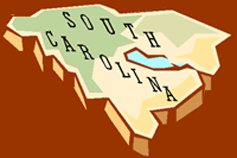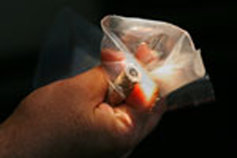Greenville, South Carolina, Alcohol and Drug Addiction Information
In 2008, Greenville was named one of the nation’s 100 Best Communities for Young People by the America’s Promise Alliance. Forbes Magazine ranked Greenville in the top 10 for Best Places for Business and Careers. But that’s not the only side to this city.
Greenville also tends to rate higher than the National Average in crime rates such as forcible rape, aggravated assault, and larceny. Greenville continues to also have an ongoing drug problem that’s driven by the gang activity and poverty in the area.
Greenville South Carolina’s Drug Source

The DEA (The US Drug Enforcement Administration) reports that marijuana, the most prevalent illegal drug of abuse in South Carolina, primarily comes from Mexico by way of I-20. Interstate 26 and I-95 are popular routes for traffickers targeting Charleston, Florence and Myrtle Beach areas.
African-American DTOs, with sources in Atlanta and Miami, are also suppliers of marijuana in the Charleston metropolitan area. In 2013, two tons of marijuana were seized from a truck full of furniture that was traveling through South Carolina on its way from Mexico to North Carolina. This recent drug seizure shows that the problem is not diminishing and still poses a threat to communities.
Cocaine and crack cocaine continue to be among the most widely abused drugs throughout the state. Because it has become increasingly difficult to transport cocaine into the U.S., some traffickers are supplementing their income by selling other drugs such as marijuana, MDMA and prescription drugs.
Methamphetamine is a constant threat in the state of South Carolina. The legislature passed laws to make it harder to obtain the precursor chemicals for this drug but the numbers of small methamphetamine labs seized and destroyed went up anyway.
Those wishing to make meth need pseudoephedrine from cold pills and new laws force them to show identification before purchasing these pills at a pharmacy. It was thought this change in law would drive down meth production. Now, legislators are considering making this popular cold medicine prescription-only, as has been done in some other states.
Heroin is readily available in multi-gram quantities throughout South Carolina and is routinely packaged in small packages (called bindles) before sale. Seizure statistics show a substantial increase in comparison to last year. Mexican DTOs dominate heroin trafficking in South Carolina and are the primary sources of supply in the Columbia area.
Ecstasy (MDMA) is readily available in several cities in South Carolina, predominantly in the areas of Greenville and Columbia, and those cities along the Atlantic coast. Recent data indicates that Atlanta, Georgia, has become a significant hub for MDMA distribution to South Carolina. Typically, users are between the ages of 16 and 25 in the middle to upper middle class economic bracket, and may be college students or young professionals. MDMA is found primarily at private parties, fitness facilities, clubs, school/college campuses, and associated venues.
Current intelligence indicates that diversion of OxyContin, hydrocodone products (such as Vicodin), and pseudoephedrine continues to be a problem in South Carolina. Primary methods of diversion being reported are illegal sale and distribution by health care professionals and workers, and doctor shopping (going to a number of doctors to obtain prescriptions for an addictive substance). Methadone, benzodiazepines, MS Contin®, and fentanyl were also identified as being among commonly abused pharmaceuticals in South Carolina.
The Dwindling Spiral Will Continue

For a person addicted to drugs or alcohol, the dwindling spiral will continue on its downward path unless action is taken. When you care for an addicted person, it’s best to act immediately before they end up in jail or dead of an overdose or accident. Unfortunately, past failed attempts to overcome addiction sap the confidence out of an individual and may mean that he or she is reluctant to try again.
In the city of Greenville, there is an increased need for effective drug and alcohol rehab and addiction treatment centers as drug and alcohol use continues to escalate. Drug use erodes the quality of life not only for the user, but for their families and communities. Marriages and families are torn apart by mistrust, betrayal, fear and anger. Careers are ruined; companies lose millions of dollars in lost production; cities and suburbs are degraded by the increased crime and violence that goes with drug trafficking and drug addiction. Something can be done to help an addicted person. Our help is available.
Choosing a Drug Rehab and Addiction Treatment Program
What should the goal be for a person’s trip to a drug rehab center? Clean and sober for 30 days? While that might be a good short-term goal, many people still fight a daily battle with cravings after completing short-term programs. When choosing a drug rehab center for yourself or a loved one from Greenville, South Carolina, it is important to become educated on the different types of drug rehabs and their expected results.
Should the Drug Rehab Location Matter When It Comes to Finding a Solution to Addiction?
If a person stays in the area of their home while they work to get sober, they will constantly be faced with the locations where they used drugs, got arrested, assaulted someone or bought drugs. These locations can serve as triggers of drug use or reminders of guilt and pain. A person may be overwhelmed by the triggers and memories and so succumb to the cravings again.
For this reason, many families seek out drug rehab programs that are far enough away from home to eliminate these reminders. This gives their loved one a chance to build a new life and new habits. Once their sober living skills are strong, they can return home to establish new patterns of living.
For individuals with a severe drug or alcohol addiction problem, choosing a residential program is another key to a successful outcome. Each person has 24-hour support, every day of the week. There’s no weekends or unsupervised trips to the store or parties that could throw the person back into old habits.
By providing a new, safe, trigger-free environment, the chance for success increases dramatically.
Our program provides people with positive circumstances to increase their chances of a successful recovery. Of those coming for our program, around 80% are from out of state or from other countries.
Narconon New Life Retreat Helps END Addiction and Alcoholism FOR GOOD.
Narconon New Life Retreat produces graduates who are drug-free, contributing members of society. The Narconon program does not use drugs like methadone or buprenorphine as part of the recovery process. So our graduates go home without dependence on these drugs and can enjoy life with the freshness of drug-free perceptions.
The program does use nutrition and nutritional supplements as an important component of its delivery. Thus the program is neither a psychiatric nor medical, but a social education model of rehabilitation.
A Narconon Program Graduate is someone:
- Who has completed the Narconon drug rehab program
- Who knows he is, in fact, capable of living a drug-free life thereafter
- Who has found relief from guilt related to what he (or she) has done in the past
- Who has a new understanding of ethical behavior that supports smart decisions in the future
- Who has an increased grasp of the best way to choose safe associates and how to deal with those who would lead him back into trouble.
Call any time to speak with one of our counselors about our program. We will take the time to answer your questions whether it be for yourself or a loved one. It is possible to replace the loss and pain of alcohol or drug addiction with a productive, enjoyable life.
Call now.